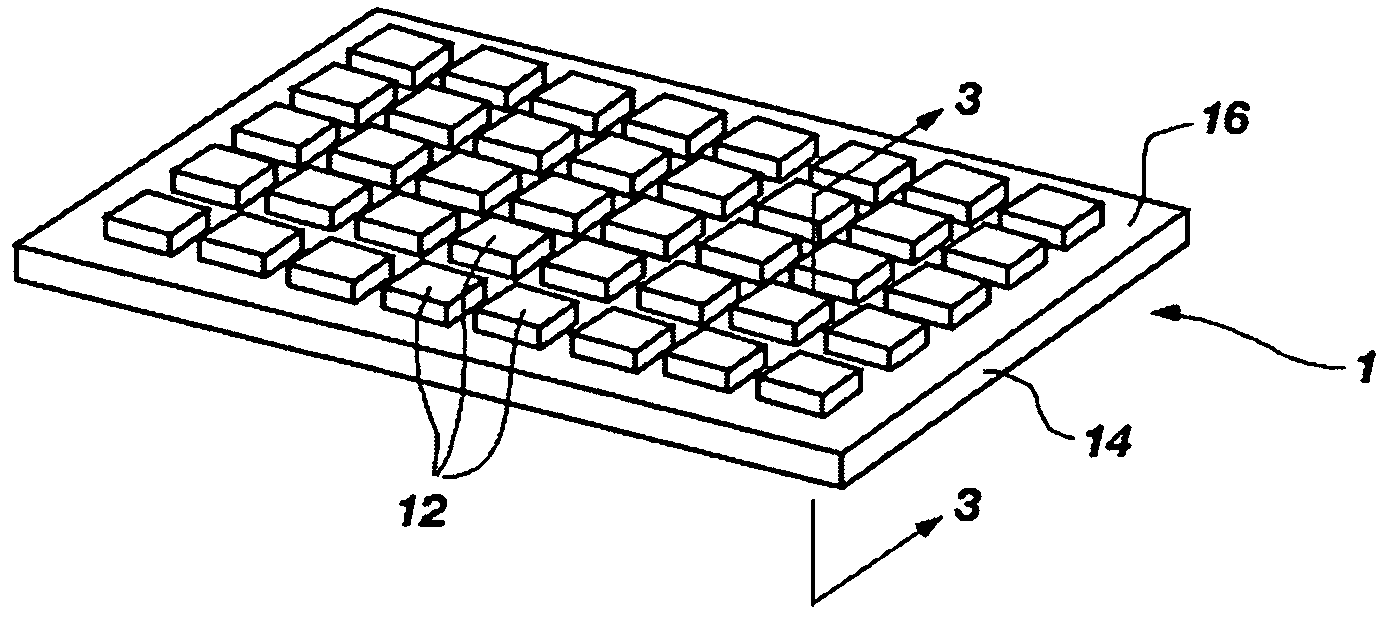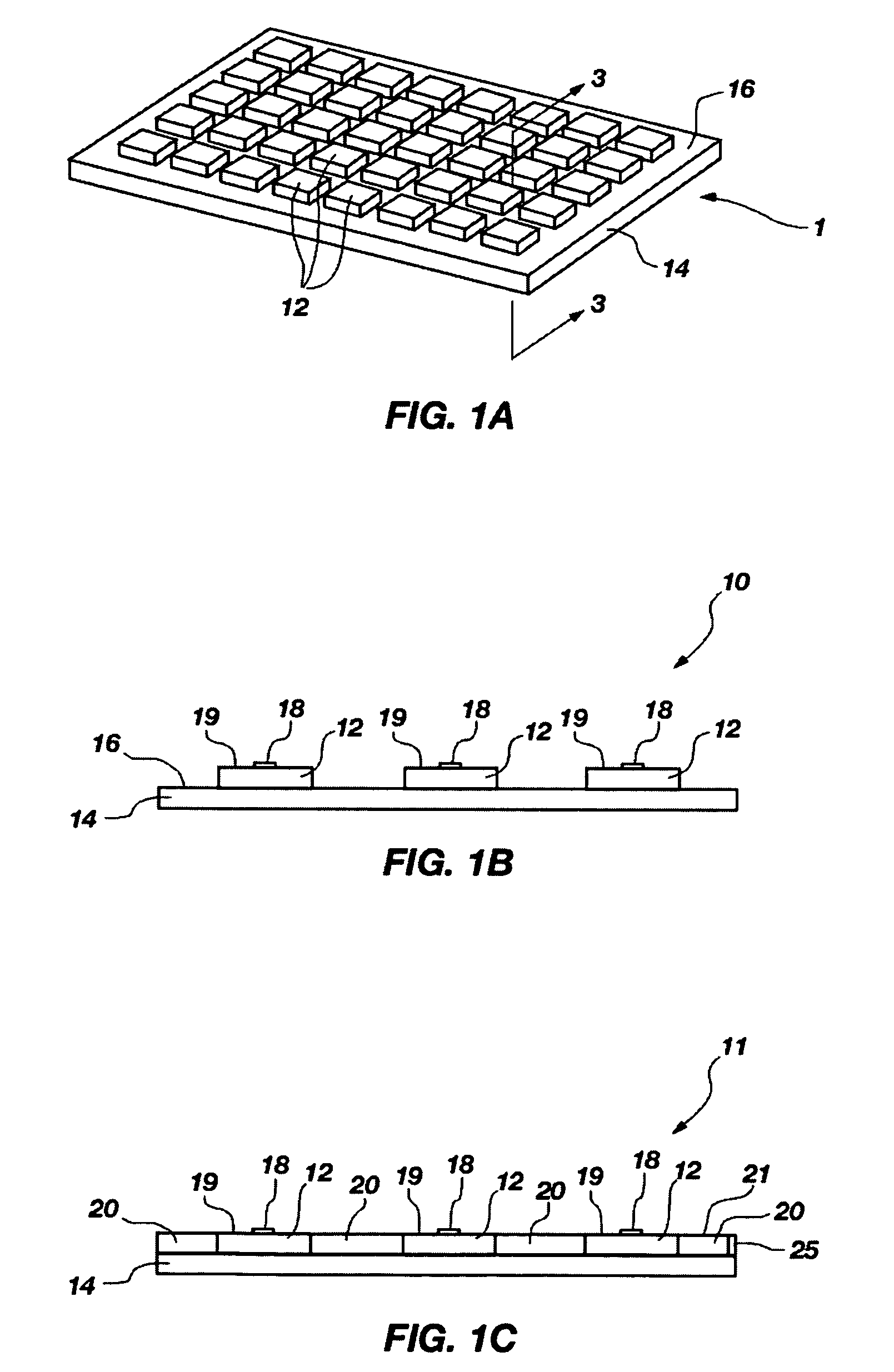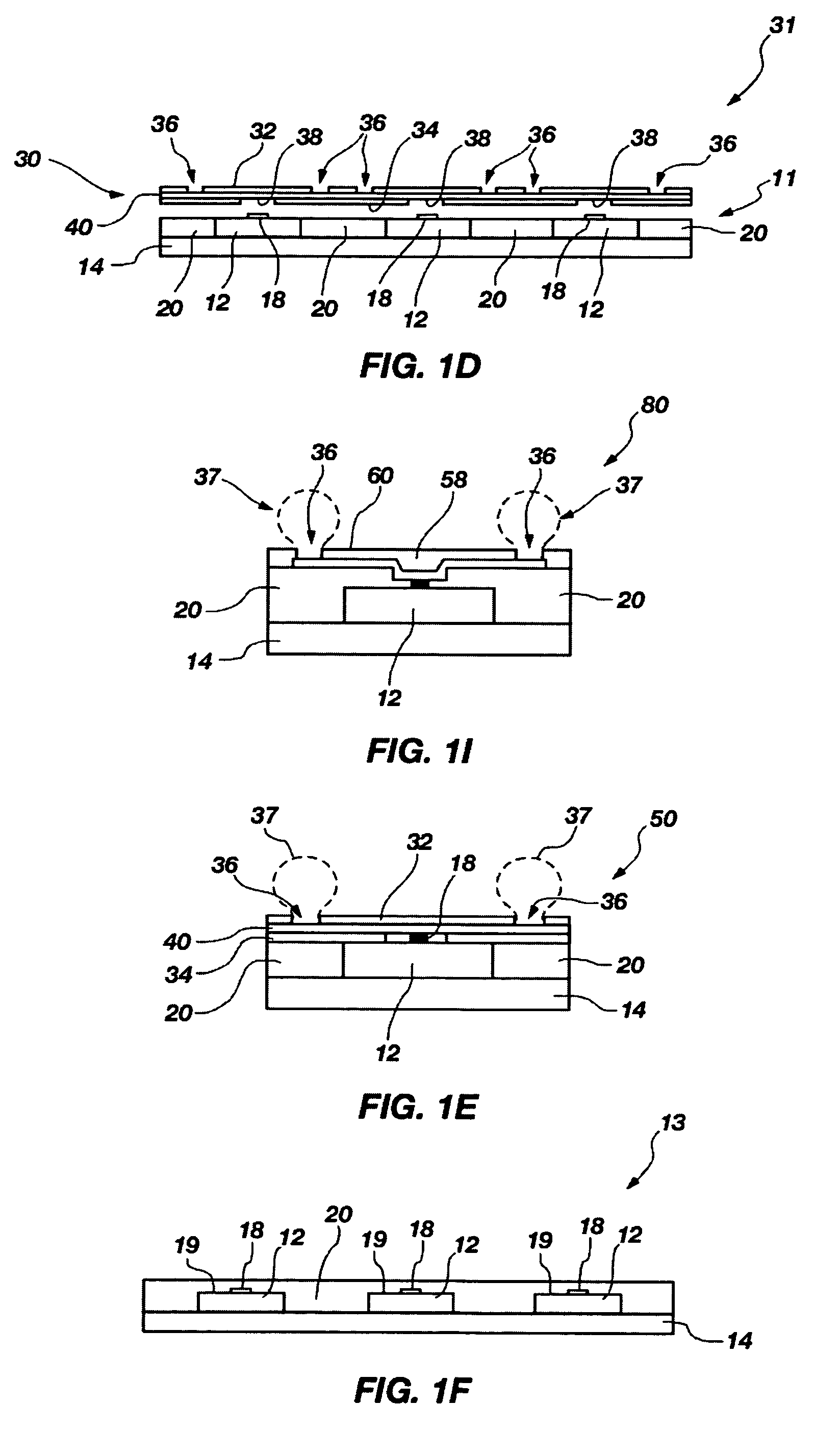Die package, conductive element, semiconductor device including same, microlens, system including same, and methods of manufacture
a semiconductor device and conductive element technology, applied in the field of semiconductor devices and components, can solve the problems of encapsulant filler particles becoming lodged between lead ends and underlying die surfaces, cracking or perforation of die coats, and non-uniform flow of encapsulant in conventional transfer molding within mold cavities, etc., to facilitate electrical connection
- Summary
- Abstract
- Description
- Claims
- Application Information
AI Technical Summary
Benefits of technology
Problems solved by technology
Method used
Image
Examples
Embodiment Construction
[0060] In one aspect of the present invention, one or more semiconductor dice may be at least partially encapsulated by application of a curable material thereabout and subsequent bulk or en masse hardening or curing thereof. More particularly, one or more semiconductor dice may be disposed upon a carrier and a package material (also termed an encapsulant), such as, for instance, a photopolymer, may be disposed about the periphery of the semiconductor dice and cured substantially in bulk or en masse. Subsequent to hardening or curing, the package material may be patterned, if necessary, to expose contact or bond pads of the semiconductor dice. Conductive traces and surface mount components may be disposed or formed as desired during or after the hardening of the package material. Such a configuration may eliminate the need for expensive transfer molding equipment and may provide increased flexibility in manufacturing.
[0061]FIG. 1A shows, in a perspective view, array 10, which inclu...
PUM
 Login to View More
Login to View More Abstract
Description
Claims
Application Information
 Login to View More
Login to View More - R&D
- Intellectual Property
- Life Sciences
- Materials
- Tech Scout
- Unparalleled Data Quality
- Higher Quality Content
- 60% Fewer Hallucinations
Browse by: Latest US Patents, China's latest patents, Technical Efficacy Thesaurus, Application Domain, Technology Topic, Popular Technical Reports.
© 2025 PatSnap. All rights reserved.Legal|Privacy policy|Modern Slavery Act Transparency Statement|Sitemap|About US| Contact US: help@patsnap.com



